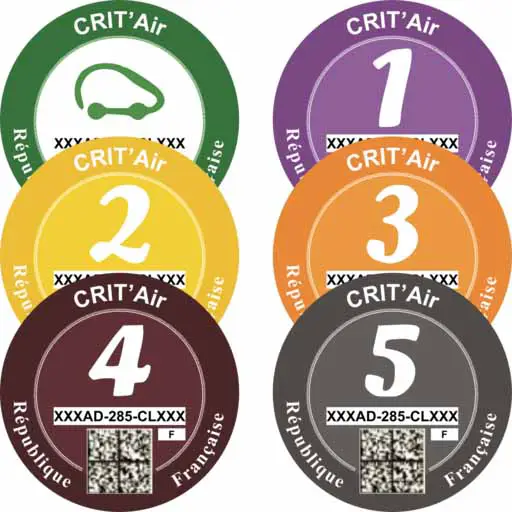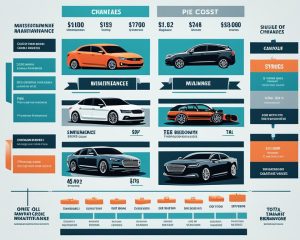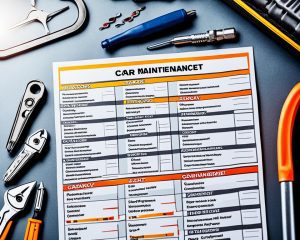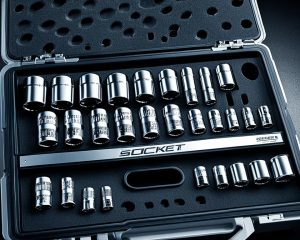Introduction
In recent years, many cities across the globe have committed to reducing their carbon footprints and improving air quality. One strategy that has gained popularity is the implementation of Low Emission Zones (LEZs). France, in particular, has been a pioneer in this area, with the introduction of the Crit’Air sticker system.
What are Low Emission Zones?
Low Emission Zones are designated areas where access is restricted for certain types of vehicles, typically those that produce higher levels of pollutants. These zones aim to reduce the concentration of harmful pollutants such as nitrogen dioxide, particulates, and carbon dioxide in the atmosphere, improving the air quality and health of the community.
In many cases, vehicles are categorized based on their emissions, with cleaner vehicles being allowed unrestricted access, while more polluting vehicles face restrictions or charges. This encourages drivers to switch to cleaner modes of transport, like electric vehicles or public transportation.
Crit’Air Sticker in France
France took a significant step towards combating urban air pollution with the launch of the Crit’Air sticker (Certificats qualité de l’Air) system in 2016. This is an emissions-based vignette (sticker) that is compulsory for both French and foreign vehicles in certain areas.
The Crit’Air system uses six categories to classify vehicles according to their pollutant emissions. This classification is based on the European emission standards (Euro 1 to Euro 6), the type of vehicle (cars, trucks, buses, two-wheelers, etc.), and its energy type (petrol, diesel, electric, hydrogen, etc.). Each category corresponds to a different colored sticker:
- Crit’Air 1 (purple): Electric or hydrogen-powered vehicles.
- Crit’Air 2 (yellow): Gasoline vehicles registered from January 2006 and diesel vehicles from January 2011.
- Crit’Air 3 (orange): Gasoline vehicles registered between January 1997 and December 2005 and diesel vehicles between January 2006 and December 2010.
- Crit’Air 4 (red): Diesel vehicles registered between January 2001 and December 2005.
- Crit’Air 5 (green): Diesel vehicles registered between January 1997 and December 2000.
- Crit’Air 6 (grey): Diesel vehicles registered before 1997.
If you want to get a Crit’air sticker quickly
Here is a great video from the very clever David Griffiths. He has forgotten more than I know about driving in France. In this video he tells you a great way to be able to drive legally in a LEZ through France even when you only realised you needed one about 3 days before you actually travel to France. (It normally takes 2 – 4 weeks t get one.
How Crit’Air Works
In certain zones, depending on pollution levels, vehicles with certain Crit’Air stickers may be prohibited from entering or using specific roads during peak pollution events. These zones, known as “Zones à Faibles Émissions” (ZFE), have been introduced in various French cities, including Paris, Lyon, and Grenoble, with more expected to follow.
For example, Paris has gradually tightened restrictions, leading to a full ban on Crit’Air 4 and 5 vehicles during weekdays, and it plans to become a zero-emission zone by 2030.
Crit’Air stickers are placed on the vehicle’s windshield. The absence of a sticker in an LEZ, or entering an LEZ with a prohibited sticker, can lead to a fine. This system is enforced through automated number plate recognition.
Best places for more information
If you want more information from a reliable source check out this article by Drive-France, Crit Air Sticker. Also if you want to buy a Crit’air sticker I suggest you only do that via the official French Government website.
Impact and Future Developments
The Crit’Air scheme is part of a broader commitment by the French government to improve air quality and transition to cleaner energy. The system has effectively reduced the number of high-emission vehicles on French roads, thereby reducing pollution levels, particularly in larger cities.
While the scheme has faced criticism, including claims that it penalizes lower-income drivers, the French government continues to work on introducing incentives for switching to cleaner vehicles and expanding public transport networks.
The Crit’Air system and the introduction of Low Emission Zones represent a progressive step towards a greener future. The push for better air quality in urban environments is not just limited to France but is part of a global shift towards sustainable living. The results of this scheme could influence other countries to adopt similar methods.
Future Developments
Looking forward, France aims to expand the number of low emission zones across the country. By 2024, it is anticipated that more than 30 urban areas will have implemented a ZFE.
Another significant development is the move towards banning older, high-emitting vehicles completely. The French government has announced plans to prohibit the use of diesel vehicles by 2024 and petrol vehicles by 2030 in the city of Paris.
In terms of the Crit’Air scheme, there are proposals for further refining the categories to account for the latest advancements in vehicle technology. For instance, distinguishing between hybrid vehicles and fully electric or hydrogen-powered vehicles could be a valuable evolution of the system.
Conclusion
The Crit’Air sticker system and the introduction of Low Emission Zones in France are innovative strategies aimed at reducing air pollution and promoting greener modes of transportation. Despite the challenges and criticisms, the benefits of cleaner air and a healthier population are undeniable.
This approach, along with other global efforts, offers a promising path towards sustainable urban living and the broader fight against climate change. The world will be closely watching the developments in France as they continue to innovate in their approach to sustainable transportation.
Suggested Post
Read my post about European road trips if you are interested in driving on the continent.
Latest Posts
- Car Maintenance Costs Breakdown: Understand Prices
 Welcome to our comprehensive guide on car maintenance costs! Whether you’re a new car owner or an experienced driver, it’s essential to understand the expenses involved in keeping your vehicle in top shape. By gaining insight into the average car maintenance expenses, you can make informed decisions about budgeting for your car care. In this …
Welcome to our comprehensive guide on car maintenance costs! Whether you’re a new car owner or an experienced driver, it’s essential to understand the expenses involved in keeping your vehicle in top shape. By gaining insight into the average car maintenance expenses, you can make informed decisions about budgeting for your car care. In this …Car Maintenance Costs Breakdown: Understand Prices Read More »
- Car Maintenance Tracking Guide | Keep Your Car Tuned
 Keeping track of car maintenance is crucial for ensuring the longevity and performance of your vehicle. Regular maintenance helps prevent any unexpected breakdowns or costly repairs, allowing you to enjoy a safe and reliable driving experience. But how can you effectively monitor and record your car’s maintenance tasks? In this guide, we will explore various …
Keeping track of car maintenance is crucial for ensuring the longevity and performance of your vehicle. Regular maintenance helps prevent any unexpected breakdowns or costly repairs, allowing you to enjoy a safe and reliable driving experience. But how can you effectively monitor and record your car’s maintenance tasks? In this guide, we will explore various …Car Maintenance Tracking Guide | Keep Your Car Tuned Read More »
- Car Care Essentials: Why Car Maintenance is Important
 Do you know why car maintenance is so crucial? Is it simply about keeping your vehicle running smoothly, or does it go beyond that? In this article, we will explore the various benefits of regular car maintenance and delve into the reasons why maintaining your car is not just important, but absolutely necessary. Key Takeaways: …
Do you know why car maintenance is so crucial? Is it simply about keeping your vehicle running smoothly, or does it go beyond that? In this article, we will explore the various benefits of regular car maintenance and delve into the reasons why maintaining your car is not just important, but absolutely necessary. Key Takeaways: …Car Care Essentials: Why Car Maintenance is Important Read More »
- Optimal Socket Set Size for Car Maintenance
 When it comes to DIY car maintenance, having the right socket set sizes is essential. Whether you’re changing oil, replacing spark plugs, or tackling other common car repairs, using the correct socket size can make the job easier and more efficient. In this section, we will explore the importance of having the optimal socket set …
When it comes to DIY car maintenance, having the right socket set sizes is essential. Whether you’re changing oil, replacing spark plugs, or tackling other common car repairs, using the correct socket size can make the job easier and more efficient. In this section, we will explore the importance of having the optimal socket set … - Car Maintenance DIY: Is It Worth The Effort?
 In a world where convenience is valued above all, many car owners wonder whether it’s worth the effort to perform their own car maintenance. DIY car care has gained popularity in recent years, with enthusiasts and budget-conscious individuals alike opting to take matters into their own hands. But is it really worth it? When considering …
In a world where convenience is valued above all, many car owners wonder whether it’s worth the effort to perform their own car maintenance. DIY car care has gained popularity in recent years, with enthusiasts and budget-conscious individuals alike opting to take matters into their own hands. But is it really worth it? When considering …






